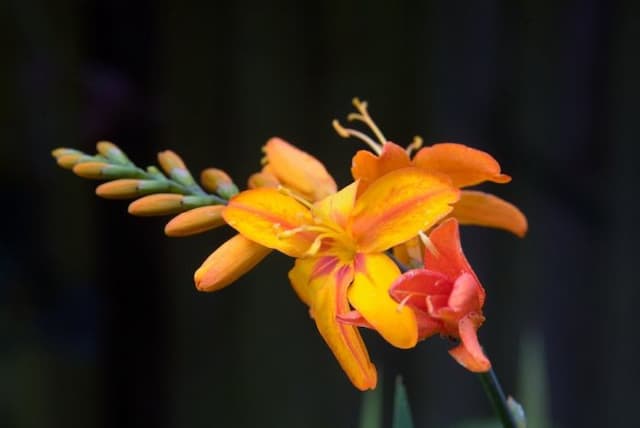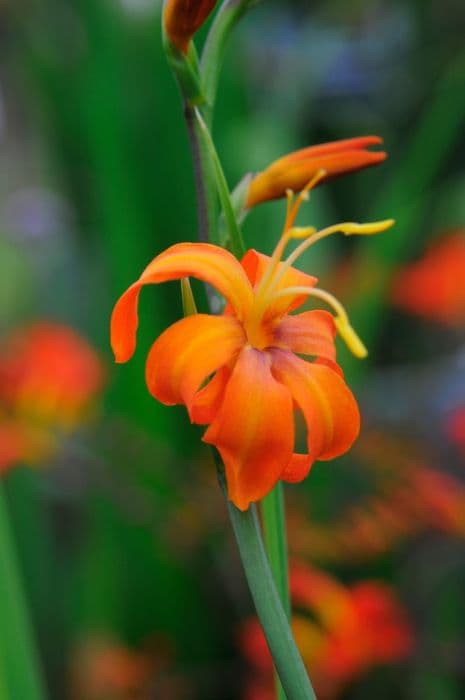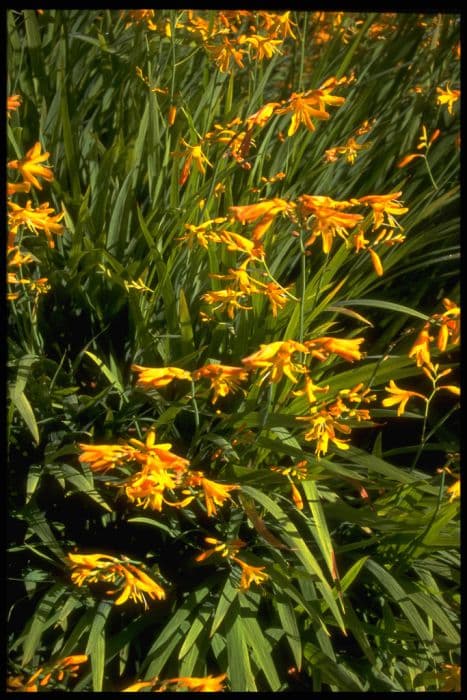Bearded Iris Iris 'Ken's Choice' (TB)

ABOUT
Iris 'Ken's Choice' is a type of Tall Bearded Iris that features an impressive display of colorful blooms. The flowers of 'Ken's Choice' are known for their exquisite combination of colors, which often include deep purples, blues, and sometimes a mixture of whites and yellows, creating a stunning contrast that is visually striking. The petals can have a velvety appearance and display various patterns, such as ruffling, veining, or spotting, which add to the individuality of each flower. The Tall Bearded Iris blooms typically consist of three upright petals called standards, and three downward-arching petals known as falls. The falls often have a beard-like feature in the middle, which is a fuzzy line that can be a contrasting color to the petal itself, contributing to the plant's ornamental value. These beards might be white, yellow, orange, or even blue and add a touch of complexity to the flower's appearance. The foliage of Iris 'Ken's Choice' is also noteworthy, with long, slender, sword-like leaves that fan out from the base of the plant. The leaves are usually a rich green color, which makes a beautiful backdrop for the colorful blooms. The foliage's vertical stance and pointed tips add to the structural elegance of this plant, giving it a striking presence in gardens. Overall, Iris 'Ken's Choice' is a cultivar valued for its showy, intricately designed flowers and attractive foliage that bring life and color to any setting where they are planted. The plant exudes beauty and sophistication, making it a popular choice for garden enthusiasts looking to add a splash of color to their landscapes.
About this plant
 Names
NamesSynonyms
Bearded Iris, German Iris
Common names
Iris 'Ken's Choice' (TB).
 Toxicity
ToxicityTo humans
The Tall Bearded Iris, specifically the cultivar 'Ken's Choice', can be toxic if ingested by humans. The rhizomes (underground stems) of irises contain irisin, iridin, or irisine, which are substances that can induce gastrointestinal issues such as nausea, vomiting, abdominal pain, and diarrhea. Handling the plant, especially the rhizomes, can also cause skin irritation in sensitive individuals. If ingested, the severity of the symptoms may vary, and it is advisable to seek medical attention if poisoning is suspected.
To pets
The Tall Bearded Iris, including 'Ken's Choice', possesses toxins that can be harmful to pets if consumed. The most poisonous part is the rhizome, which contains compounds such as irisin, iridin, or irisine. If a pet ingests parts of the iris, it might experience symptoms such as vomiting, diarrhea, drooling, lethargy, or abdominal pain. Depending on the amount ingested, the symptoms can range from mild to severe, and it is important to contact a veterinarian promptly if you suspect your pet has eaten any part of an iris plant.
 Characteristics
CharacteristicsLife cycle
Perennials
Foliage type
Deciduous
Color of leaves
Green
Flower color
Mixed
Height
3 feet (91 cm)
Spread
2 feet (61 cm)
Plant type
Bulb
Hardiness zones
Varies
Native area
Varies
Benefits
 General Benefits
General Benefits- Ornamental Appeal: Iris 'Ken's Choice' features attractive, colorful blooms that enhance the aesthetic of gardens and landscapes.
- Low Maintenance: These irises require minimal care once established, making them ideal for gardeners of all skill levels.
- Drought Tolerance: Once established, they can withstand periods of low water, making them suitable for xeriscaping or water-wise gardens.
- Perennial Growth: As a perennial, they return year after year, providing long-term value and reducing the need for replanting annually.
- Variety of Uses: They can be used in flower beds, borders, and as cut flowers, offering versatility in landscaping and floral design.
- Pollinator Attraction: These flowers attract pollinators like bees and butterflies, which is beneficial for the ecological health of a garden.
- Propagation: Can readily be propagated by division, enabling gardeners to expand their gardens or share with others.
 Medical Properties
Medical PropertiesThis plant is not used for medical purposes.
 Air-purifying Qualities
Air-purifying QualitiesThis plant is not specifically known for air purifying qualities.
 Other Uses
Other Uses- Iris 'Ken's Choice' can be used to create natural dyes for textiles; the flowers can produce shades of yellow, green, or even blue depending on the mordant used.
- The petals of the iris can be crystallized and used as an elegant edible decoration on cakes and desserts.
- Dried iris blooms add a decorative touch to potpourri mixes, providing a gentle fragrance and bursts of color.
- Eco-friendly artists may use Iris 'Ken's Choice' petals as a source of pigment for botanical watercolor paints.
- The strong fibers in Iris leaves can be woven into garden twine or small craft items like baskets and hats.
- Gardeners sometimes plant iris as companion plants to deter certain pests due to their fragrance and root system.
- Because of its striking appearance, Iris 'Ken's Choice' can be photographed and used in botanical art or as a subject for garden photography workshops.
- Iris rhizomes, particularly from fragrant varieties, can be dried and used in the making of natural potpourri.
- The structural form of the iris plant can be used in landscape design as a natural architectural element, providing height and visual interest.
- Iris leaves can be folded and cut into shapes for use in floral arts and crafts, such as making flower arrangements or decorative wreaths.
Interesting Facts
 Feng Shui
Feng ShuiThe Iris is not used in Feng Shui practice.
 Zodiac Sign Compitability
Zodiac Sign CompitabilityThe Iris is not used in astrology practice.
 Plant Symbolism
Plant Symbolism- Hope and Wisdom: The Iris is often associated with hope and wisdom, derived from the Greek goddess Iris who was the messenger of the gods and the personification of the rainbow, signifying a bridge between heaven and earth.
- Faith: Irises symbolize faith and trust in the divine, or faith in oneself and one’s journey.
- Courage: Dating back to Ancient Greece, the Iris has been tied to courage and admiration, as it was linked to the Greek hero Hercules.
- Purity and Innocence: This symbolic meaning stems from the flower’s delicate appearance, often used in religious ceremonies and to represent these virtues.
- Royalty: In France, the Fleur-de-lis, an emblem based on the shape of the Iris, is a symbol of the monarchy and connotes majesty and regality.
 Water
WaterThe Tall Bearded Iris, including 'Ken's Choice', should be watered deeply once a week, ensuring approximately 1 to 1.5 gallons per square foot during the growing season, especially if there's been no significant rainfall. After establishing, Irises prefer less frequent watering as they are somewhat drought tolerant. During the hot, dry summer months, extend the interval to every 10-14 days. However, it's crucial not to overwater, as excess moisture can promote root rot. In well-draining soil, water should reach the root zone, which typically means watering until the soil is moist to a depth of about 9 inches.
 Light
LightTall Bearded Iris thrives in full sunlight, requiring at least 6 to 8 hours of direct sun each day for optimal growth and flowering. 'Ken's Choice' should be planted in a location where it will receive ample sunlight throughout the day, avoiding shaded areas where blooms may be limited. These Irises perform best in a garden spot that offers bright, unhindered sunshine from morning to late afternoon.
 Temperature
TemperatureThe ideal temperature range for Tall Bearded Iris is between 55°F and 75°F, but they can tolerate temperatures as low as around 14°F in winter and as high as 90°F in summer. 'Ken's Choice' prefers cooler, temperate climates with consistent temperatures within this range for best growth and flowering. They should be protected from extreme heat and frost, which can damage the plant and affect bloom quality.
 Pruning
PruningTall Bearded Iris should be pruned by removing spent blooms and cutting back the flowering stalks to the base after blooming to encourage future growth. 'Ken's Choice' can also be pruned in late summer or early fall to remove and discard any old, diseased, or damaged leaves. Pruning is typically done on an as-needed basis but is most beneficial when carried out immediately after flowering and again as part of winter preparation.
 Cleaning
CleaningAs needed
 Soil
SoilTall Bearded Iris 'Ken's Choice' thrives in well-draining soil with a pH of 6.8 to 7.0. A mix of garden soil, compost, and coarse sand is ideal, ensuring good drainage to prevent rot.
 Repotting
RepottingBearded Irises, including 'Ken's Choice,' don't need regular repotting but should be divided every 3 to 5 years to maintain vigor and flower production.
 Humidity & Misting
Humidity & MistingTall Bearded Iris 'Ken's Choice' prefers a low to moderate humidity environment, typical of outdoor conditions, without special humidity requirements.
 Suitable locations
Suitable locationsIndoor
Provide bright light, low humidity, and good airflow for 'Ken's Choice.'
Outdoor
Plant in sunny spot, well-draining soil, and provide space for rhizomes.
Hardiness zone
3-9 USDA
 Life cycle
Life cycleTall Bearded Iris 'Ken's Choice' begins its life cycle when its seeds germinate in well-drained soil after exposure to a period of cold stratification, simulating winter conditions. As the temperature rises in spring, the seeds sprout and develop into seedlings with narrow, sword-like leaves. Over time, these seedlings form rhizomes, which are horizontal underground stems serving as energy storage that allow the plant to survive adverse conditions. The rhizomes give rise to new foliage and, eventually, the iris reaches maturity, with tall stems bearing showy flowers, typically blooming in late spring to early summer. After flowering, the iris enters a period of dormancy during the hotter months; it may become semi-dormant if conditions are not ideal, such as during extreme heat or drought. The plant completes its cycle annually, with the rhizomes growing larger and often needing division every 3-5 years to prevent overcrowding and to maintain vigorous growth.
 Propogation
PropogationPropogation time
Late Summer-Early Fall
The preferred time to propagate an Iris 'Ken's Choice', commonly known as the Tall Bearded Iris, is late summer to early fall, a few weeks after blooming but well before the first hard frost to allow establishment. The most popular method is through division of the rhizomes. As the plant grows, it will create new rhizome offshoots that can be separated from the parent plant. Gently dig up the clump of rhizomes and wash or brush off the soil. Using a sharp knife, cut the rhizomes into sections, ensuring each division has at least one fan of leaves and a portion of the roots. Trim the leaves to about a third of their height, approximately 4 to 6 inches (10 to 15 centimeters), to reduce water loss and make the plant easier to handle. The divisions can then be replanted in well-drained soil, with the top of the rhizome slightly exposed to the air, and spaced about 12 to 24 inches (30 to 60 centimeters) apart to allow for growth.
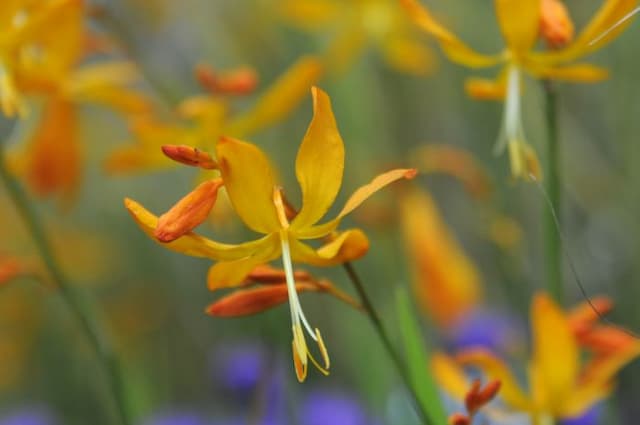
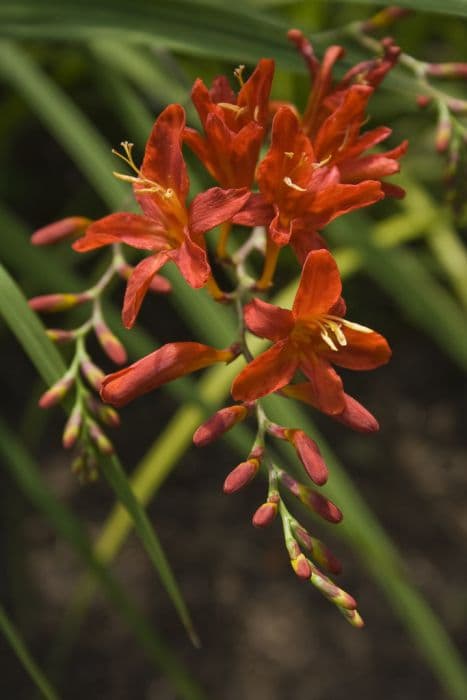
![Montbretia [Bright Eyes]](/_next/image?url=https%3A%2F%2Fplants-admin.emdemapps.com%2Fimages%2Fplants%2F%2Fimages%2F604b5f4a483b6.png&w=640&q=75)
